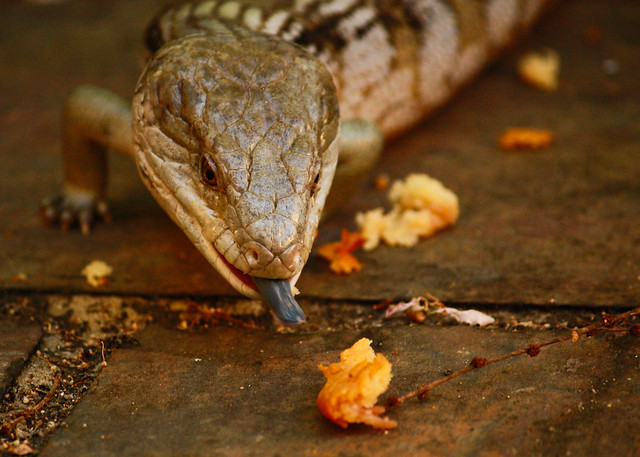Blue-Tongued Skink

Blue tongued skinks, also known as Tiliqua scincoides, are a species of large lizard that is native to Australia and New Guinea. They are named for their distinctive blue tongue, which they use as a warning signal when threatened. These lizards are relatively large, with adult specimens reaching lengths of up to 2 feet. One of the most appealing aspects of blue tongued skinks as pets is their calm and docile nature. They are non-venomous and generally gentle, making them a good choice for first-time reptile owners. They are also relatively easy to care for, as long as their enclosure is properly set up and maintained. In terms of enclosure, blue tongued skinks require a tank that is large enough for them to move around and thermoregulate their body temperature. A 4ft by 2ft by 2ft enclosure is suitable for an adult skink. The enclosure should also have a secure lid, as blue tongued skinks may try to escape if given the opportunity. In terms of temperature, blue tongued skinks need a warm side of their enclosure that is between 85 and 90 degrees Fahrenheit, and a cooler side that is between 75 and 80 degrees Fahrenheit. A heat lamp or heating pad can be used to maintain the proper temperature gradient, and a thermostat should be used to ensure that the temperature remains consistent. In terms of lighting, blue tongued skinks do not require special lighting and can be kept on a natural light cycle. However, they do need a source of ultraviolet (UV) light in order to properly metabolize calcium and prevent metabolic bone disease. A UVB light bulb should be placed on one end of the enclosure, and should be turned on for 12 to 14 hours each day. In terms of diet, blue tongued skinks are omnivores and should be fed a varied diet that includes both protein and plant matter. Commercial skink diets are available, which provide a balanced mix of nutrients. Live insects can also be offered as occasional treats, but should not make up the majority of the skink's diet. Vegetables and fruits should also be offered as part of the diet, and can provide important nutrients and fiber. It is recommended to feed blue tongued skinks every other day, and to provide fresh water at all times. Overall, blue tongued skinks make great pets for reptile enthusiasts due to their calm and docile nature and relative ease of care. With the proper enclosure, temperature, lighting, and diet, they can live long and healthy lives in captivity.
